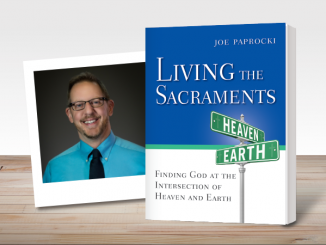I love showing videos when I teach. However, I have learned over the years that videos are to be a supplement to the lesson. This is especially true in faith formation since our faith is a living, incarnational faith transmitted by living people. Imagine if the Gospel of John said, “For God so loved the world that he sent a video of his only Son, Jesus…” No, Jesus came in the flesh and continues to share his Real Presence with us through the Eucharist. The Church relies on us catechists—flesh and blood human beings—to transmit the Catholic faith and to introduce others to an encounter with Jesus Christ.
I mention this because it is becoming alarmingly common for catechetical programs to provide their catechists with video programs that ultimately replace them. It is a primary reason that we at Loyola Press have resisted creating an “All-Joe Paprocki-All-the-Time” video series. Instead, in our God’s Gift sacramental preparation program, we provide brief segments on video of me and other catechetical experts, to introduce or reinforce what you are teaching.
With that in mind, permit me to share with you some tips for how to properly use video resources in your faith formation setting.
- Always preview the video to make sure you are familiar with it and that it is appropriate.
- Keep videos brief; rarely do you want to show something longer than 20 minutes. Five to 10 is most effective. If the video is of longer length, consider pausing it every so often to review and discuss what the students have seen so far.
- Be sure to set up the video by providing a reason for showing it and directing the young people as to what they should watch for.
- Consider providing the young people with a viewing guide that keeps them actively engaged rather than being entertained passively. The guide should invite them to take notes and answer a few basic questions about what they are watching.
- After viewing, avoid asking what the young people thought of the video; their job is not to be movie critics. Get right into asking them what they learned from the video, what the main points were, or what insights they have about it if the video is less fact-based and more inspirational.
Here is an informative article from a science teacher who learned many of the same strategies for the most effective use of videos as an educational supplement.





Be the first to comment